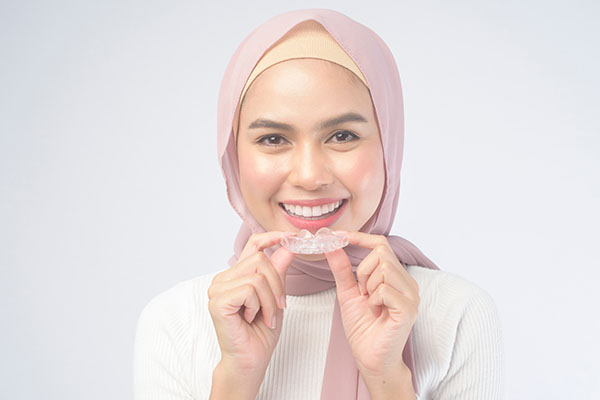How Dentists Use Botox

Dental Botox® surprisingly pretty versatile when it comes to what it can be used for. It plays the role of an elective procedure that removes age lines and other superficial imperfections. Additionally, general dentists and oral surgeons incorporate dental Botox® into their treatment plans.
Read on to learn more about how dental Botox® can be used for cosmetic and therapeutic purposes.
The science behind dental Botox®
The active ingredient of Botox® is a dangerous yet useful toxin. Under the wrong circumstances (like botulism), the Botulinum toxin can cause paralysis throughout the body. However, the fact that Botox® causes paralysis is what makes it useful.
Being a neurotoxin, Botox® inhibits the action of motor neurons. Motor nerve endings transmit electrical impulses that cause muscle contraction. When Botox® blocks such nerves, it renders the muscles immobile.
Botox® also removes the nerves’ ability to transmit pain signals. Below are a few ways that dental Botox® can be used.
1. Correction a gummy smile
Some people have a smile where their lip retracts past the teeth and the gums. Their smile exposes the gums, making for an unattractive look. A cosmetic dentist will use dental Botox® to limit the retraction of the lip muscles.
2. Reduction of smile lines
With age, many people develop lines at the corner of their lips or either side of the mouth. These lines become more prominent when a person laughs or makes certain movements with their mouth.
Dental Botox® causes the muscles around the lips to relax and stretch out, which in turn stretches the skin that covers them. This effectively reduces the appearance of wrinkles.
3. Management of facial pain
Most disorders of the jaw cause pain around the jaw, ears and facial muscles. Sometimes, the conditions cause chronic headaches. A dentist can use therapeutic dental Botox® to cut off the transmission of pain signals to the brain.
Usually, a dentist will use Botox® to manage the pain as they diagnose and treat the underlying cause.
4. To stop jaw clenching, teeth grinding and other jaw disorders
To grind their teeth, a patient needs to clench their jaw, exerting pressure on the teeth and the jawbone. The person cannot clench their jaw if the motor nerves that control the jaw muscles fail to fire electrical impulses. A dentist may use dental Botox® to deactivate these nerves.
Botox® offers relief from Bruxism and jaw clenching, giving the dentist a chance to address the underlying causes like:
- Stress
- A bad bite
- TMJ
- An otherwise malformed jaw
In this scenario, dental Botox® can act as a standalone treatment that manages the condition. It can also be used as part of a treatment plan that may involve corrective procedures that target the structures around the jaw.
5. Improving the healing process after oral surgery
Being a paralytic, dental Botox® can act as a pharmaceutical splint. A dentist may use Botox® to deactivate the jaw muscles and prevent a patient from clenching their jaw after oral surgery.
A patient who goes home with a loaded dental implant could benefit from dental Botox®. By deactivating the jaw muscles at the site of the implant, dental Botox® will keep the jaw muscles from clenching and putting pressure on the implant and the surrounding bone.
The same goes for any procedure where the jawbone needs time to heal without undue pressure put on it.
Learn more about dental Botox®
Reach out today to get started with dental Botox! Our team is readily available to assist you.
Request an appointment here: https://www.mytotaldentistry.com or call McCarthy Dentistry at (740) 546-5178 for an appointment in our Marietta office.
Check out what others are saying about our services on Yelp: Read our Yelp reviews.
Recent Posts
For many patients, Invisalign® treatment is a good alternative to traditional braces. Treatment time is often shorter, and patients can maintain better oral hygiene during the process. This type of orthodontic treatment uses a series of clear aligners to straighten teeth. The patient wears the trays for 20-22 hours a day, only removing them for…
An effective and yet inconspicuous way to straighten the teeth, Invisalign® gives individuals the flexibility to enjoy a wide range of foods while undergoing the teeth straightening process. When compared to traditional braces that come with a long list of what can be eaten and what needs to be avoided, removable alignment trays bring more…
Patients who choose Invisalign® are generally able to maintain a more normal lifestyle than patients wearing traditional braces. Patients with wire-and-bracket braces, or those who had such braces in the past, likely remember at least one instance in which they had to visit the emergency orthodontist to replace a part or fix a broken wire,…
A dental filling is important in achieving good dental health and a painless smile. This dental restoration can seal the tooth and protect it from further decay. Knowing when to get fillings can help you achieve your smile goals earlier. Here are the signs your tooth may need a dental filling right away.Pain often develops…


